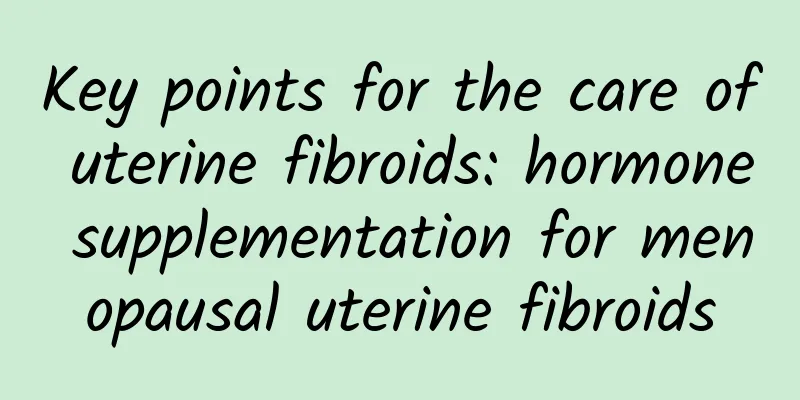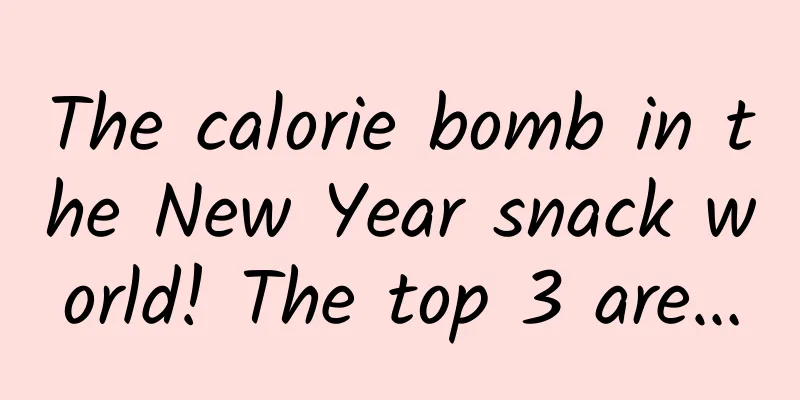Key points for the care of uterine fibroids: hormone supplementation for menopausal uterine fibroids

|
How should we take care of uterine fibroids in our daily life? How can we prevent uterine cancer in our daily life? Nursing tips for uterine fibroids: 1. Prevent excessive fatigue and pay special attention to rest during menstruation. 2 Eat more vegetables and fruits and less spicy food. 3. Keep the vulva clean and dry, and wear loose underwear. If there is too much vaginal discharge, wash the vulva at any time. 4. After being diagnosed with uterine fibroids, you should go to the hospital for regular check-ups. If the fibroids grow slowly or not at all, you can have a check-up every six months; if they grow significantly, you should consider surgical treatment to avoid severe bleeding or compression of abdominal organs. 5. Avoid getting pregnant again. Patients with uterine fibroids have poor uterine recovery after artificial abortion, which often causes long-term bleeding or chronic genital inflammation. If you have heavy menstruation in June, eat more iron-rich foods to prevent iron deficiency anemia. 7 Do not take extra estrogen, especially after menopause, to prevent the growth of uterine fibroids. 8Myomectomy can be used to preserve fertility and surgical treatment is necessary. Hormone supplementation for menopausal uterine fibroids Uterine fibroids and breast fibroids are relative contraindications to estrogen supplementation because they both rely on estrogen for growth. Whether these patients can supplement estrogen depends on the severity of menopausal symptoms. For patients with obvious menopausal symptoms, severe depression, anxiety, and even suicide, even if they have diseases such as uterine fibroids, estrogen should be supplemented first to correct menopausal symptoms. It is recommended not to rush to supplement estrogen or a small amount of phytoestrogens. Phytoestrogens mainly include isoflavones and lignans. The former are mainly found in beans, fruits and vegetables, and patients can drink soy milk and tofu in moderation; the latter are mainly found in grains, lentils, wheat, black rice, fennel and onions. |
<<: Is ovarian chocolate cyst a disease? What is the pathogenesis?
>>: What are the symptoms of ovarian cysts and how to diagnose them
Recommend
What to do if adolescent girls have ovulation bleeding
Ovulation bleeding in adolescent girls can be all...
What harm does menopause have on couples' lives?
Postmenopausal women sometimes experience private...
What are the inspections before abortion?
For those who have an unexpected pregnancy, abort...
Do multiple abortions lead to endometrial hyperplasia? How can women prevent endometrial hyperplasia?
Endometrial hyperplasia is mainly caused by repea...
Can cervical erosion develop into cervical cancer?
"Cervical erosion" troubles many female...
Knowing more about the symptoms of ovarian cysts can give patients more confidence
The ovaries are important reproductive organs of ...
A brief analysis of differential diagnosis of cervicitis
Cervicitis is often caused by childbirth, surgery...
Which hospital is more professional for endometrial tuberculosis
Endometrial tuberculosis is a common gynecologica...
How to remedy contraceptive failure and what are the precautions after miscarriage?
If contraception fails, you can take emergency co...
Briefly explain what is Gardnerella vaginitis
Gardnerella vaginitis is a relatively serious dis...
A brief introduction to the prevention of ovarian cysts
The prevention of ovarian cysts is something that...
Good-looking and slimming! Latin aerobics butterfly sleeves
In the sunny summer, for many women, whether wear...
What is the best way to diagnose Bartholinitis?
Bartholin's gland cyst is caused by inflammat...
Can I eat strawberries after a miscarriage?
There are many things to pay attention to in wome...
Analyze the cause of dysmenorrhea: cold condensation in the cells
Traditional Chinese medicine believes that coldne...









